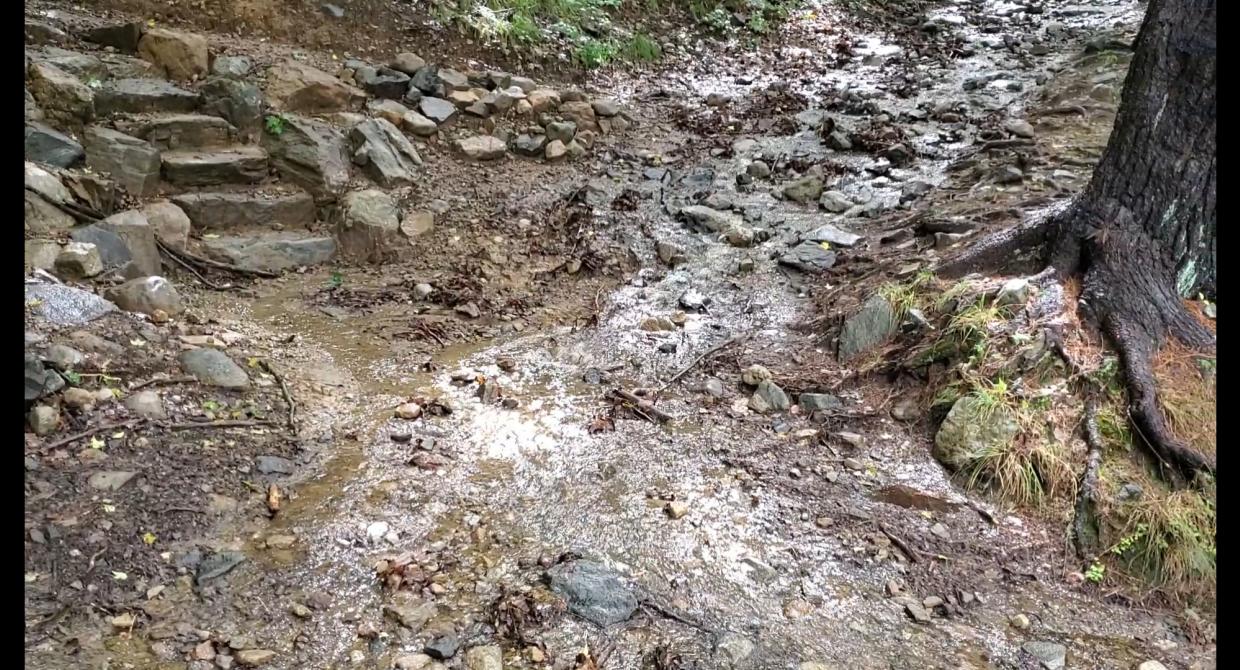High Rainfalls Highlight Value of Sustainable Trails
Title

Body
Some say that the job of designing, building, and maintaining sustainable trails involves managing two things—people and water—and that the two are usually related. For instance, minimum impact recreation principles tell us to avoid using wet trails to prevent displacing saturated soils and hastening erosion.
On the other side of the coin from user behavior, trail planners and designers strive to keep trails out of wet areas whenever they can. They aim to keep grades moderate and on side slopes that can drain more easily. Builders and maintainers try to divert runoff from trail surfaces as quickly and frequently as possible to prevent it from building up erosive volume and speed.
These efforts are challenging enough during our region’s wet winters and high rainfall years. But major storm events like August’s twin hurricanes Henri and Ida illustrate the need for sustainable design and maintenance. Most people (other than long-distance hikers) wouldn’t be on a primitive trail in the aftermath of such a storm—not with downed trees, trickling creeks, and dormant springs suddenly gushing back to flood levels and significant water on trail sections that had been bone dry to contend with. But for builders and maintainers, these conditions can be some of the most illuminating. They help identify what areas are draining well and which ones require attention, sometimes with unexpected results.
A properly functioning trail segment should not have large amounts of water flowing down trail more than 10 or 15 feet before draining off downhill, even under deluge conditions. As dramatic and video-worthy as the trail becoming a temporary stream might appear, it should make trail professionals cringe. That fast-moving water is carrying off all the soil loosened up by our feet, hooves, and/or wheels, and then some. Over the years, that means more sediment in our waterways and degraded trails left behind for future generations, which then require more costly fixes to prevent them from becoming unsightly permanent scars on the natural landscape. The upside though, is that these storm events help make it plain where the drainage is being most overwhelmed by water flows, which can then help us decide where to focus our efforts to make trail fixes.
This summer’s storms kept our trail crews busy assessing trail conditions and damage and planning remediation projects for the remainder of this year and into 2022. If you’d like to learn more about what it takes to build a trail that can withstand significant water and/or traffic, we invite you to attend a workshop led by one of our skilled trail builders. Topics such as Trail Drainage Structures or Layout and Design are offered seasonally. Or, spend a morning learning the tricks of the trade with one of our crews! Head to our Events Calendar to find upcoming dates and learn more.
